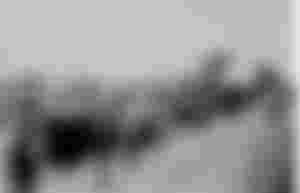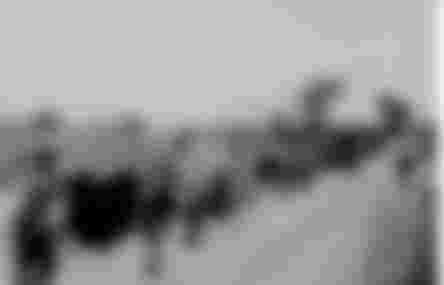The Philippines' relationship with the United States began when the two countries joined forces to fight the Spaniards. [10] As allies, Filipino soldiers provided Americans with valuable information and support from the military.
[11] However, the United States was opposed to the wishes of the Filipinos. Aguinaldo was not pleased when the Americans refused to support Philippine independence.
[11] The relations between the two countries ended and tensions rose when the American goal of staying on the islands became clear.
[11] Philippine-American War
The Philippine-American War broke out in February, 1899, after two American soldiers killed three Filipino soldiers in San Juan. [12] This war cost more and more casualties than the Spanish-American War.
[4] About 126,000 American soldiers fought in the war; 4,234 Americans were killed, as well as 16,000 Filipino soldiers who were involved in a national guerrilla campaign without a specific number of members.
[12] Between 250,000 and 1,000,000 civilians died from hunger and disease. They tortured one another. [12] The lack of weapons caused the Filipino soldiers to defeat the Americans in major battles but the Filipinos won the guerrilla warfare.
[12] Malolos, the capital of the revolutionary government, was captured by the Americans on 31 March 1899 but Aguinaldo and his government escaped and relocated the capital to San Isidro, Nueva Ecija. Antonio Luna, Aguinaldo's best commander, was killed in June.
Due to Luna's death and the continuous defeat of his soldiers in the North Luzon battles, non-centralized guerrilla forces in each military zone replaced the regular army in November 1899. The civilians, who were detained between the Americans and the rebels, suffered. [12
Aguinaldo was arrested at Palanan, Isabela on March 23, 1901 and taken to Manila. He pledged allegiance to the United States and ordered his allies to surrender, which was a signal of the end of the war. [12] But conflicts continued in some parts of the Philippines, especially in Mindanao, until 1913.
[13] United States colony
The United States viewed their mission in the Philippines as preparing the Filipinos for free governance.
[14] The civil government was founded in 1901, under the leadership of William Howard Taft, the first American governor-general of the Philippines, to succeed Arthur MacArthur, Jr.
The governor-general is the head of the Philippine Commission, an organization established by the United States with limited powers and limited executive powers. The law enforcement commission established various branches of government, including judicial style, civil service and local government.
The Philippine National Constabulary was established to manage the remaining anti-American movement and later to fulfill the responsibilities of the United States Armed Forces. The Philippine Assembly was inaugurated in 1907 as the lower house, while the Philippine Commission was the highest assembly. United States proposals in the Philippines have been replaced in the wake of changing administrations.
[4] In the early years of colonial rule, Americans did not want to give the Filipino people the right to rule. However, when Woodrow Wilson became president of the United States in 1913, a new proposal was adopted that paved the way for Philippine independence.
The Jones Act, passed by the United States Congress in 1916, became the basis for establishing a government, promising independence and establishing the elected Senate of the Philippines.
The cooperation and confrontation of the Filipinos with the governors-general of the United States occurred in the 1920s, depending on whether the governor-general managed the colony with the country's liberators.
Members of congress sought to gain independence from the United States immediately. Sent to Washington D.C. some freedom missions. Established a civil service run by Filipinos in 1918.
Philippine politics at the time of its colonialism in the United States was governed by the Nacionalista Party, established in 1907.
Although it sought an easy victory of independence, it supported the United States in its proposals. [15] It was led by Manuel L. Quezon, who served as Senate president from 1916 to 1935.
Commonwealth era In 1933,
the United States Congress passed the Hare-Hawes-Cutting Act as the Philippine Freedom Act even though it was opposed by President Herbert Hoover.
[16] Although this law was developed with the help of a commission from the Philippines, Senate President Manuel L. Quezon opposed it because of its provision to maintain U.S. control over the country's military bases.
Under his influence, the Philippine legislature opposed it. [17] The following year, a new law called the Tydings-McDuffie Act was passed by the legislature.
This law provides for the establishment of the Commonwealth of the Philippines with a 10-year peaceful transition to independence.
The commonwealth will have its own constitution and will govern the country, but foreign relations are the responsibility of the United States, and some laws must be approved by the president of the United States.
[17] A constitution was created in 1934 which was adopted in a plebiscite the following year. On May 14, 1935, an election was held to fill the newly established position of President of the Commonwealth won by Manuel L. Quezon of the Nacionalista Party, and to establish a Philippine government based on the principles of the United States Constitution.
The Commonwealth was established in 1935, with a strong executive branch, a single branch of the assembly, the National Assembly and the Supreme Court of the Philippines made up of Filipinos for the first time since 1901.
During the Commonwealth, the The Philippines has elected an Electoral Commissioner to the United States House of Representatives (as Puerto Rico does today).
The new government has advocated for the establishment of a national defense base, stronger economic control, education reforms, transportation improvements, the colonization of the island of Mindanao and the promotion of local capital and industrialization.
But the commonwealth addressed the problem of agriculture, the uncertain diplomatic and military situation in Southeast Asia, and the ambiguous level of U.S. commitment to the future Republic of the Philippines. The constitution was amended in 1939–1940 to restore the two-member congress and the approval of President Quezon to run again, with only a six-year term.
World War II and the Japanese occupation

Japan launched a surprise attack on Clark Air Base in Pampanga on December 8, 1941, just ten hours after the attack on Pearl Harbor. The bombing using planes was followed by the arrival of Japanese soldiers in Luzon.
The army of Filipino and American soldiers was led by General Douglas MacArthur. With the increasing number of enemy troops arriving in the country, Filipino and American troops fled to Bataan and Corregidor island. Manila, which was declared open city / Open City to prevent its destruction, but the Japanese became rebellious and still attacked [18] it was invaded by the Japanese on 2 January 1942 [19].
The Filipinos continued their defense until the surrender of Filipino and American soldiers to Bataan on April 9, 1942 and the Corregidor on May 6. Most of the 80,000 Japanese prisoners of war captured in Bataan were forced to march toward a less fortunate it has a distance of 105 kilometers North (Coastal).
An estimated 10,000 Filipinos, 300 Chinese Filipinos and 1,200 Americans died before arriving at the destination. [20] Quezon and Osmeña accompanied the soldiers to Corregidor and soon left for the United States, where the Commonwealth ruled. [21] MacArthur was ordered to go to Australia, where he began his plan to return to the Philippines.
The Japanese military authorities immediately organized a new governmental structure in the Philippines and established the KALIBAPI (New Philippines Service Association). They organized the State Council that enacted civil laws until October 1943, when they declared the Philippines a free nation.
The Japanese-led republic led by Jose P. Laurel did not become popular. [22] The Japanese occupation of the Philippines was opposed by many guerrilla activities. The military forces of the Commonwealth of the Philippines fought the Japanese in a guerrilla war and recognized it as a unit of the United States Army.
The success of this battle was demonstrated at the end of the war, in which the Japanese controlled only twelve of the forty-eight provinces in the country. [22] The main element of the rebellion in Central Luzon was held by the Hukbalahap (People's Army Against Japan), which had 30,000 members and extended control over most areas of Luzon. [22]
From May 8, 1942 to September 2, 1945, the Philippine-led War Against the Philippines began under Japanese occupation.
More than a thousand Filipinos and Chinese Filipinos in large numbers joined as soldiers were former military units of the Commonwealth Army of the Philippines under the United States military group (1935–1946) and joined as guerrillas of the recognized faction guerrillas in all these wars and conflicts in the Philippines such as Luzon, Visayas and Mindanao and they fought against the Japanese, and before the American troops returned to the Philippines in 1944.
General Douglas MacArthur and President Sergio Osmena arrived with a large number of Filipino and American soldiers in Leyte on October 20, 1944. More soldiers arrived, and Filipino and American allied soldiers entered Manila. The war lasted until the formal surrender of the Japanese on 2 September 1945. The Philippines suffered the loss of many lives and widespread destruction after the war ended.
An estimated one million Filipinos were killed, and Manila was destroyed because the Japanese did not declare Manila as an open city as the Americans did in 1942. [22] President Manuel L. Quezon is with the United States Sergio Osmena. Quezon died of tuberculosis on 1 August 1944 and Osmeña succeeded him.
He was with American forces marching on Leyte. Meanwhile, a large number of Filipino and American soldiers combined with guerrilla fronts will be defended by the clashes with the Japanese war since the beginning of the Philippine liberation war campaign.
He served as the president of the country until the election on April 23, 1946. It was a preparation for the United States' independence. He ran for president, but lost to Manuel Roxas.

Such a long article. But very importative. A student's can already search in this platform for a historical subjects.